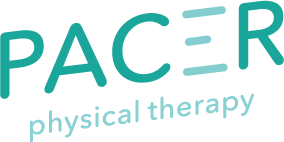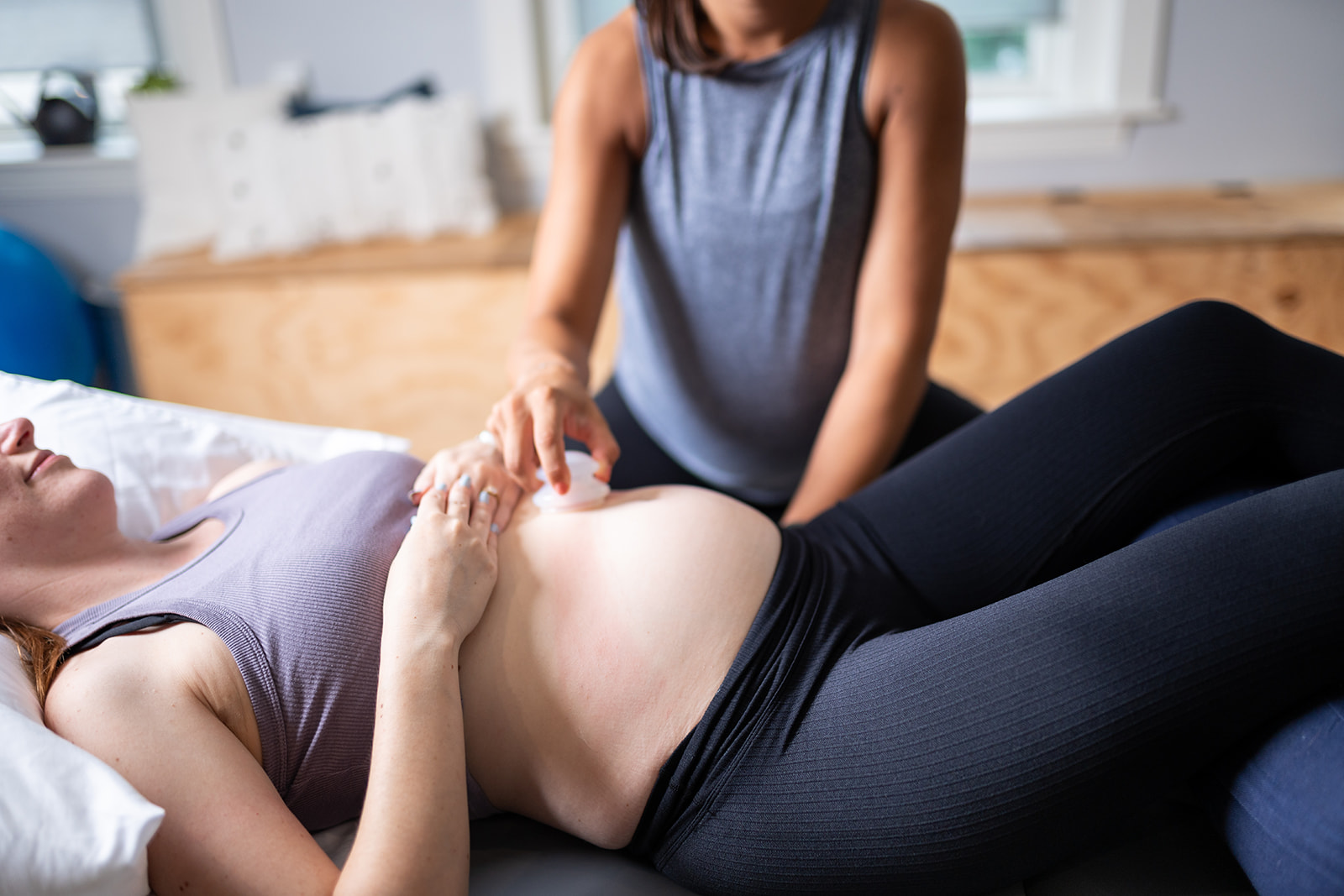Last updated: 4/30/24
Constipation is incredibly common. Whether due to changes in routine, traveling, new foods or drinks, or something else, it can happen to even the most regulated person.
Constipation is never fun, but you don’t just have to wait for it to pass. You can take action!
This blog post will talk about the causes of constipation, what you can do to manage it, and how pelvic physical therapy can help if you get stuck. (No pun intended!)
Constipation Symptoms
- Stools that are hard, lumpy, or dry
- Straining or pain with passing stool
- Sensation of an incomplete bowel movement or blockage
- Fewer than 3 bowel movements per week
Causes
A lot of factors can contribute to constipation, but the main ones include changes in routine, diet and hydration, muscular involvement, and medications.
Changes in Routine
Around the holidays, disruption to our day-to-day schedule is the most common constipation culprit.
Our bowels thrive off of established routines. In a normally functioning gastrointestinal (GI) system, our gastric motility — the automatic movement of stool through the GI system — is the strongest at night, frequently resulting in a bowel movement in the morning, especially after food or caffeine intake.
Caffeine increases gastric motility, and the gastrocolic reflex makes you feel like you have to poop after eating. Exercise also tends to increase gastric motility and emptying because it stimulates muscle contractions throughout your GI system.
So a sudden change in sleep schedule, a missed meal, or a skipped regular workout can impact your ability to have a good bowel movement that day.
Diet and Hydration
The average person is recommended to consume about 6-8 cups of water, or half of their body weight (lbs) in ounces daily. 200-400 mL (about 1-2 cups) of that water passes through the stool daily, so if not enough water is consumed, then stools will be more hard, lumpy, and dry.
There are two types of fiber: soluble and insoluble. Soluble fiber helps absorb water to soften stool. Insoluble fiber adds bulk to the stool to allow for easier and quicker passage.
If your diet doesn’t include enough soluble fiber, then your stools will be harder and dry, and if it doesn’t include enough insoluble fiber, then your stools will be in small quantities that are difficult to pass.
Muscular
Your body has to do a lot to poop. Your abdominals gently squeeze to provide a downward pressure to facilitate emptying and your pelvic floor has to lengthen and open to let stool exit. This requires muscle strength, coordination, and relaxation.
If your abdominals are weak, your pelvic floor muscles are overactive, or there is poor muscle coordination (not lengthening AND opening), this can result in constipation. This is where we, as pelvic health experts, can help!
Medications
Wouldn’t it be nice if side effects didn’t exist? Well, unfortunately, that’s not the case.
Here’s a list of some medications that can contribute to constipation or decreased gastric motility:
- Opioids
- Calcium-channel blockers (amlodipine, nifedipine, etc.)
- Antidepressants
- Iron
- Nicotine
- Progesterone
Consider talking to your prescribing provider if you are taking one or more of these medications and are experiencing constipation to see if suitable alternatives are available.
6 Tips to Fight Constipation
Constipation is never fun. But there’s good news! Here are 6 things that you can do TODAY to improve your bowel movements.
1. Hydrate
Drink 6-8 cups of water throughout the day. Note: caffeine increases gastric motility, so if you stop drinking your tea and coffee, you may notice a change in bowel movements.
2. Eat More Fiber
The total recommended fiber intake for females is 25g. For males, it’s 38g.
Soluble fiber helps with absorbing water to soften stools. It can be found in fruits, vegetables, seeds, nuts, and beans. Insoluble fiber helps with bulking up stool. It can be found in whole grains.
Make sure you eat both soluble and insoluble fiber. If you have pre-existing dietary restrictions, GI or autoimmune conditions, or more specific questions, talk to your medical provider, and consider meeting with a registered dietitian.
3. Avoid Urge Suppression: Go When You Feel Like You Gotta Go!
The urge comes from a stretch response when stool enters your rectum. If you have a bowel movement soon after feeling the urge, evacuation is easier because the muscles of the colon are already in motion to get the stool out.
Most of the time, you don’t even have to use your abdominals to give an extra push. Although you can ignore the urge (and it does go away) if you do so consistently, it becomes a habit that leads to delayed evacuation, the need to use your abdominals more, and constipation.
4. Do Abdominal (ILU) Massage
This simple massage traces your large intestine to stimulate more movement through it and takes less than 5 minutes!
Watch my video below to learn how to do it yourself:
5. Use a Squatty Potty
By increasing how much your hips and knees are bent, you improve the rectum’s alignment with the anus and are better able to relax the pelvic floor muscles. You can substitute a squatty potty with a step stool, shoe box, a trash can on its side, etc.
6. Breathe
Chronic constipation paired with poor breathing mechanics puts a lot of pressure on the pelvic floor, which can lead to muscle dysfunction or hemorrhoids over time.
Although you may think that you will have more success with emptying by holding your breath to push, that’s not the most efficient way! Instead, focus on taking a deep inhale into your belly, then slowly exhale through pursed lips (like you’re blowing out a candle).
Push only on the exhale. As you breathe out, you’ll naturally slightly engage your abdominal muscles, which provides a subtle increase in downward pressure to facilitate emptying. Breathing also promotes lengthening and opening of the sphincters of your pelvic floor to let stool out.
When to Seek Pelvic Health Physical Therapy
If you have tried implementing all of the above strategies and notice ongoing constipation, or you develop other symptoms like low back or hip pain, urinary urgency or frequency, or pelvic pain, then you can benefit from pelvic health physical therapy (PHPT).
Your PHPT would perform an initial evaluation, in which they would look at your posture, breathing mechanics, strength, and mobility, ask about your diet, hydration, stress management, and bowel habits, and potentially perform an internal exam to determine if the pelvic floor is contributing to symptoms.
Based on the evaluation, your PT can perform manual release of overactive muscles, assist in retraining muscle coordination, work on downregulating your nervous system, restore strength and mobility, and provide expanded information on the above tips provided.
Put Constipation in Your Past
Now that you learned a little about the causes of constipation, what you can try at home, and when to seek additional help from a pelvic PT, I hope you feel confident navigating your days with happy bowels.
If you have any follow-up questions or are ready to meet with a pelvic health physical therapist, please reach out. I would love to hear about your story and help address your individual needs. Schedule a discovery call with me today!
You got this!
Dr. Vera






